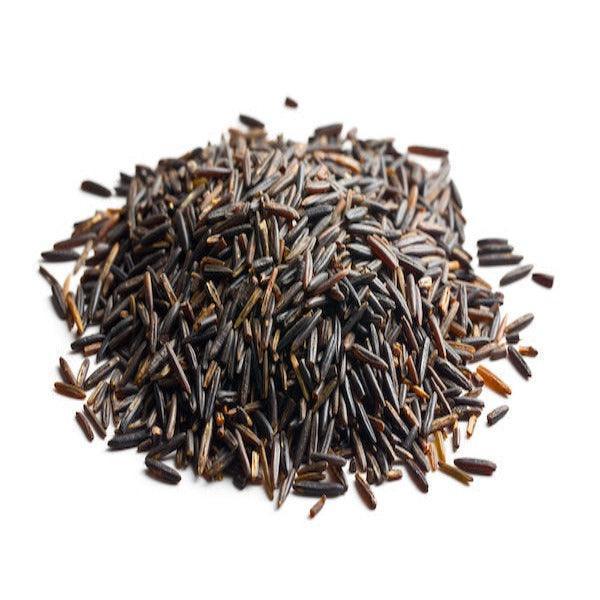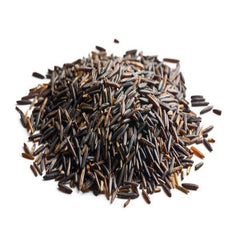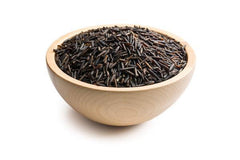



Description
xCanadian wild long rice (Zizania aquatica) is a remarkable whole grain that has surged in popularity. Grown in the pristine marshlands and waterways of Canada, this unique seed from aquatic grass is packed with nutrients and offers numerous health benefits.
What Makes Wild Rice Unique?
Despite its name, wild rice isn’t actually rice—it’s the seed of an aquatic grass. It earned its name because of its resemblance to rice in appearance and cooking style. However, wild rice has a distinct nutty, earthy flavor and a chewy texture that sets it apart. Its black-brown hue makes it a visually appealing addition to any dish.
Whether used as a substitute for rice, pasta, or potatoes, or paired with soups, creamy sauces, curries, and stews, wild rice’s versatility makes it a fantastic choice for any meal.
Nutritional Highlights
Wild rice is a nutrient-dense food, boasting high protein and fiber content with fewer calories than traditional grains.
- Protein: 4g per 100g serving—double that of white and brown rice.
- Fiber: 2g per 100g serving, similar to brown rice and significantly more than white rice.
- Minerals: Packed with magnesium, phosphorus, zinc, copper, manganese, and small amounts of potassium, iron, and selenium.
- Vitamins: Provides vitamin B6 and folate.
- Calories: Just 101 calories per 100g serving—lower than both brown rice (112 calories) and white rice (130 calories).
Potential Health Benefits
Thanks to its impressive nutrient profile, wild rice is associated with several health benefits:
- Rich in Antioxidants: Protects against aging and reduces the risk of chronic diseases like cancer.
- Heart Health: Whole grains like wild rice are linked to a 16-21% lower risk of heart disease.
- Improved Blood Sugar Control: Regular consumption of whole grains may reduce the risk of type 2 diabetes by 20-30%. Animal studies also suggest wild rice improves blood sugar regulation.
Cooking Instructions
- Rinse 1 cup of wild rice thoroughly.
- Bring 6 cups of water to a boil in a saucepan. Add the wild rice and 1 teaspoon of salt.
- Reduce heat to low and simmer for about 45 minutes until the rice is tender.
- Drain any excess water and enjoy!
Interesting Facts About Wild Rice
- Wild rice is not rice but the edible seed of an aquatic grass.
- It has been cultivated for thousands of years by Indigenous peoples in North America.
- Wild rice grows naturally in marshlands and waterways across Canada, particularly in Manitoba and eastward to the Atlantic.
- Its unique flavor and texture make it a favorite in gourmet dishes worldwide.
Canadian Wild Long Rice FAQ
Q: What is wild rice?
A: It’s the edible seeds of a grass species, known for its nutty taste and chewy texture.
Q: Is wild rice high in protein?
A: Yes, with 4g of protein per 100g serving, it offers twice the protein of white and brown rice.
Q: Is it low in calories?
A: Absolutely! Wild rice contains fewer calories than both white and brown rice.
Q: Where in Canada is wild rice grown?
A: It thrives in marshlands and waterways, with significant production in Manitoba and regions stretching to the Atlantic Ocean.
Wild rice is more than just a grain—it’s a nutritious and delicious way to elevate your meals while supporting Canadian agriculture. Its rich flavor, impressive nutrient content, and fascinating history make it a must-try for anyone looking to add wholesome, sustainable ingredients to their diet.
- Choosing a selection results in a full page refresh.


